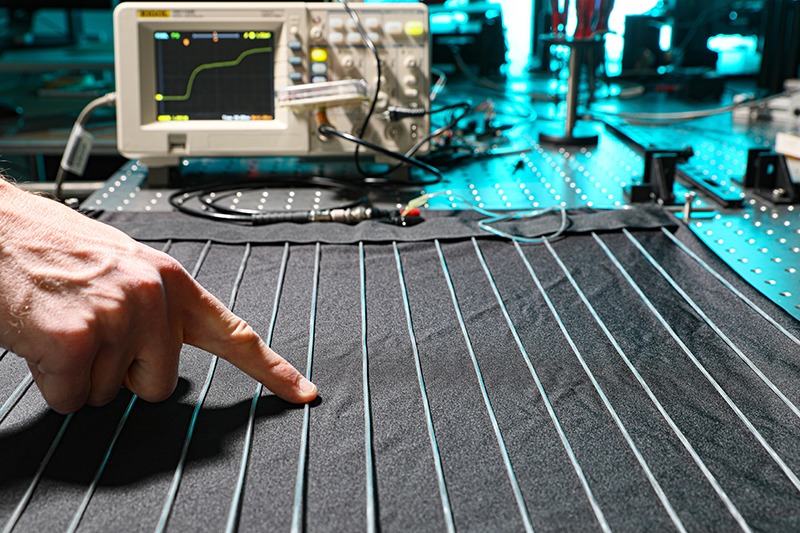At the Swiss Federal Institute of Technology Lausanne (EPFL), researchers have developed electronic fibers that, when embedded in textiles, can collect a wealth of information about our bodies by measuring subtle and complex fabrics deformations. Their technology relies on transmission line theory and offers a host of applications, such as in health care and robotics, reports EPFL.
The new electronic fiber was developed by Professor Fabien Sorin and doctoral assistant Andreas Leber, at the Laboratory of Photonic Materials and Fibre Devices (FIMAP) in EPFL’s School of Engineering. “Imagine clothing or hospital bedsheets capable of monitoring your breathing and other vital movements, or AI-powered textiles that allow robots to interact more safely and intuitively with humans” says Leber. “The soft transmission lines that we’ve developed open the door to all of this.”
Read more Gore and Bonbouton Collaborate for Smart Fabrics and Digital Health Applications

The researchers invented a sensor that can detect different kinds of fabric deformation such as stretch, pressure and torque – all at the same time. “Finding a method for differentiating all these convoluted movements was our biggest challenge, because it is very difficult for sensors to measure several stimulations simultaneously,” says Leber. “Also, conventional sensors in textiles have several drawbacks. First, they are fragile and break easily. Second, you need a lot of them to cover a large area, which eliminates many of the advantages of fabrics. And third, each type of conventional sensor can detect only one kind of deformation.”
But by incorporating concepts from reflectometry, Sorin and Leber were able to create soft fiber-shaped sensors that open up new doors for smart textiles. “Our technology works similar to a radar, but it sends out electrical pulses instead of electromagnetic waves,” explains Leber.
Read more Pireta Aims to Make Smart Clothes Truly Wearable
The team’s research drew on a variety of disciplines including electrical engineering, mechanical engineering, and materials science. The next step will be to make the technology more portable by reducing the footprint of peripheral electronics.












